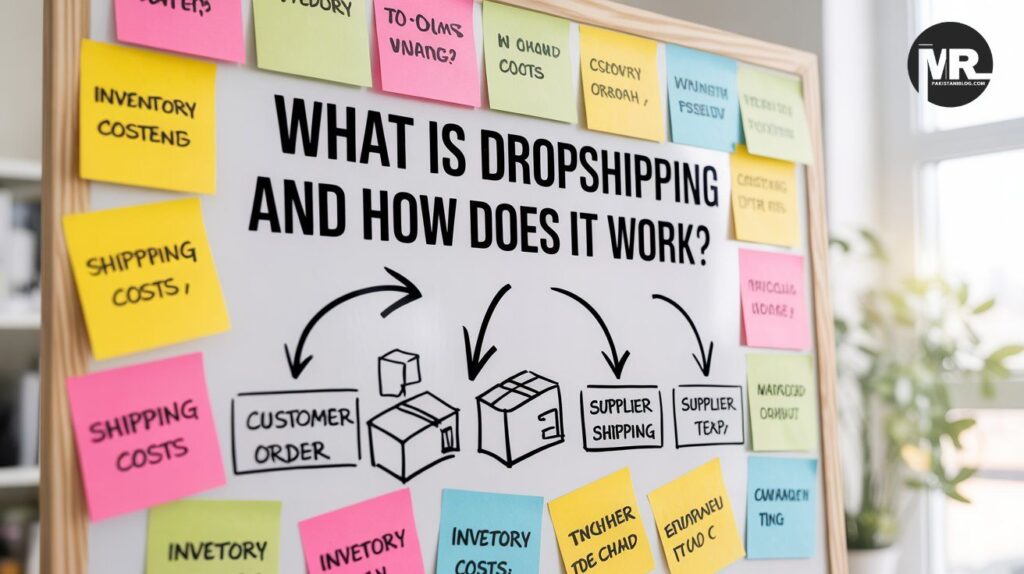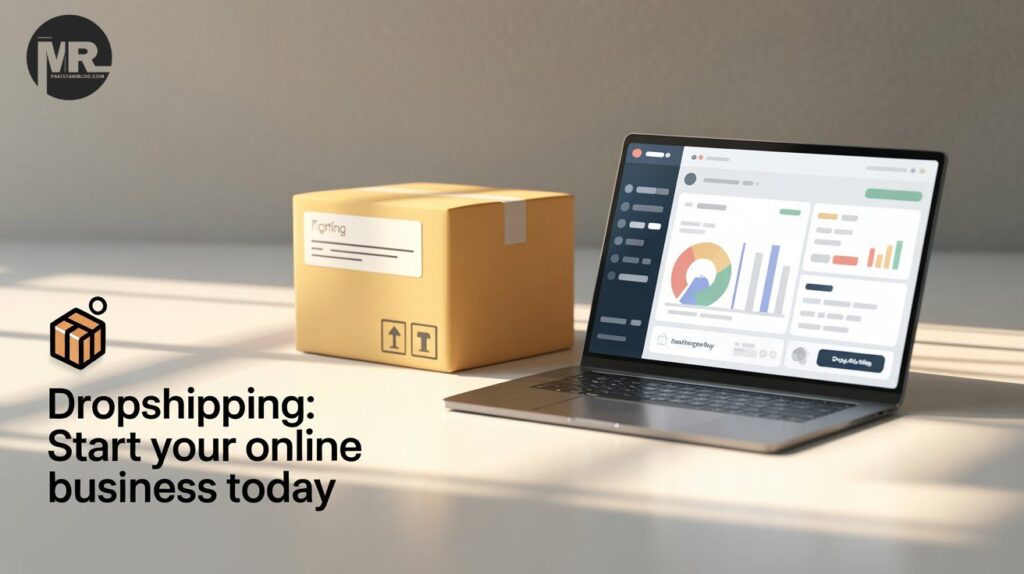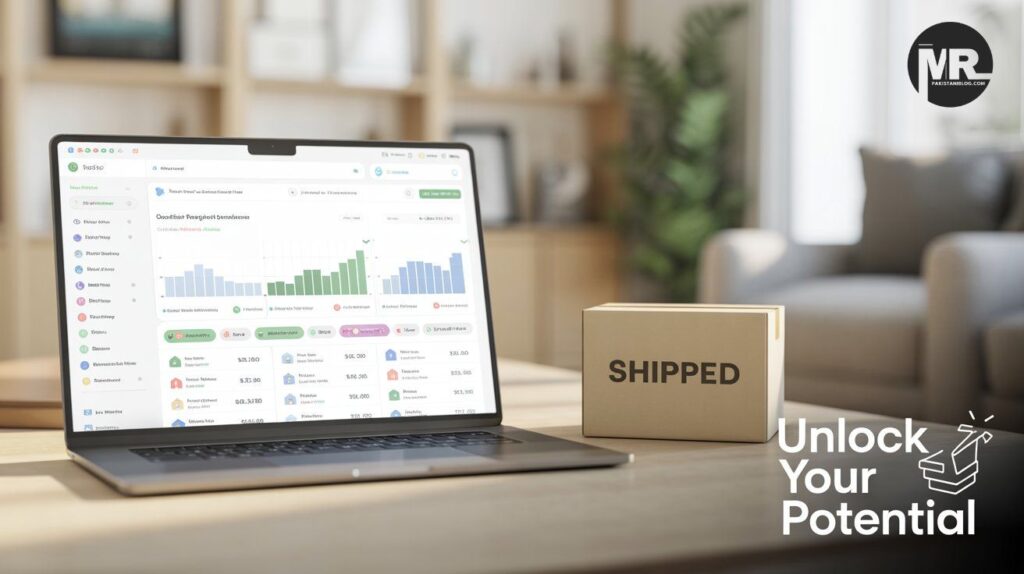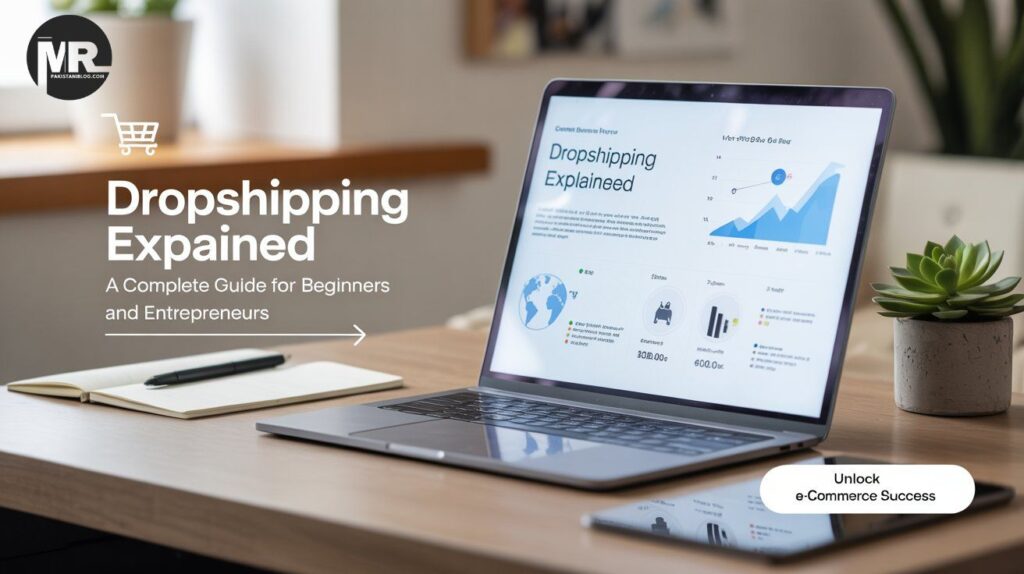Dropshipping is a modern e-commerce business model that allows entrepreneurs to sell products online without maintaining physical inventory. Instead of stocking items, the seller partners with a supplier who ships products directly to the customer. This approach reduces upfront investment and eliminates the need for a warehouse, making it attractive for new business owners. By focusing on niche markets and leveraging digital marketing, dropshippers can reach global audiences with minimal operational costs. However, it also comes with challenges like high competition and reliance on third-party vendors. With strategic planning and the right tools, dropshipping can be a scalable and flexible way to build an online retail business.
What is Dropshipping and How Does It Work?

Dropshipping is a retail fulfillment method where a store doesn’t keep the products it sells in stock. Instead, when you sell a product, you purchase the item from a third party and have it shipped directly to the customer. This means you never handle the product directly.
The process is straightforward:
- Customer places an order on your online store.
- You forward the order and shipment details to your dropshipping supplier.
- The supplier ships the product directly to the customer.
This model offers several advantages, including low start-up costs and no need to manage inventory. However, it also comes with challenges like supplier reliability and thin profit margins.
Is Dropshipping Profitable? The Truth About the Business Model
Many entrepreneurs are attracted to dropshipping due to its low start-up costs and the allure of passive income. While it’s possible to earn a substantial income, profitability depends on various factors.
Profit margins in dropshipping are typically low, often between 10% to 30%. This means you’ll need to generate a high volume of sales to achieve significant profits. Effective online marketing, choosing the right target demographic, and selecting quality products are crucial for success.
It’s important to note that while dropshipping can be profitable, it’s not a get-rich-quick scheme. Success requires dedication, strategic planning, and continuous optimization.

How to Start a Dropshipping Business (Step-by-Step Guide)
Starting a dropshipping business involves several key steps:
- Choose a Business Concept: Identify a niche that interests you and has a demand in the market.
- Source Products: Find products that align with your niche and have good profit potential.
- Select Suppliers: Partner with reliable dropshipping suppliers who offer quality products and timely order fulfillment.
- Build an Online Store: Create a user-friendly e-commerce website using platforms like Shopify, Wix, or Squarespace.
- Register Your Business: Decide on a business structure (e.g., sole trader or limited company) and register with the appropriate authorities.
- Market Your Business: Utilize online marketing strategies, including SEO, social media, and paid ads, to attract customers.
Each step is crucial for establishing a solid foundation for your dropshipping business.
How to Find the Best Dropshipping Suppliers
Finding reliable dropshipping suppliers is vital for ensuring product quality and customer satisfaction. Here’s how to identify the best suppliers:
- Research: Use platforms like AliExpress, SaleHoo, or Worldwide Brands to find potential suppliers.
- Evaluate: Assess suppliers based on product quality, shipping times, and customer reviews.
- Test Orders: Place sample orders to evaluate the supplier’s reliability and product quality.
- Communication: Maintain clear communication with suppliers to address any issues promptly.
A reliable supplier is essential for smooth order fulfillment and maintaining customer trust.

Strategies to Grow and Scale Your Dropshipping Store
To expand your dropshipping business, consider the following strategies:
- Optimize Your Website: Ensure your online store is user-friendly and mobile-responsive.
- Expand Product Listings: Add new products that align with your niche to attract a broader audience.
- **Implement Order Automation: Use tools to automate order processing and inventory management.
- **Leverage Multi-channel Selling: Sell on platforms like Amazon, eBay, and social media to reach more customers.
Scaling requires careful planning and investment in marketing and infrastructure.
Most Common Dropshipping Challenges & How to Overcome Them
Dropshipping comes with its own set of challenges:
- Supplier Issues: Delays or errors in order fulfillment can impact customer satisfaction.
- Thin Profit Margins: High competition can drive prices down, affecting profitability.
- Customer Service: Handling returns and complaints can be challenging without direct control over products.
To overcome these challenges, focus on building strong relationships with reliable suppliers, optimizing your pricing strategy, and providing excellent customer service.
Real Examples of Successful Dropshipping Brands
Several entrepreneurs have built successful dropshipping businesses:
- Maddy Glynn: Started her dropshipping business while pregnant and now earns £80k a month.
- Jelline Brands: Transformed a $200 investment into a seven-figure business by leveraging dropshipping and freelance services.(thesun.co.uk, thesun.co.uk)
These success stories highlight the potential of drop shipping when combined with dedication and strategic planning.
Frequently Asked Questions (FAQs) About Dropshipping
Is dropshipping legal?
Yes, dropshipping is a legal business model. However, it’s essential to comply with local laws and regulations, including tax obligations.
How much do beginner dropshippers make?
Earnings vary widely. Some beginners earn a modest income, while others, with the right strategies, can make substantial profits. For instance, Maddy Glynn earns £80k a month through her dropshipping business.(thesun.co.uk)
What are the startup costs?
Starting a dropshipping business can be affordable. Initial costs may include setting up an e-commerce




Dropshipping seems like a promising venture, but it’s clear that it’s not as simple as it sounds. The emphasis on dedication and strategic planning makes sense, but I wonder how long it usually takes to see tangible results. The idea of building strong relationships with suppliers is crucial, but how do you even start finding reliable ones? I’m curious about the initial costs—are there any hidden expenses that beginners often overlook? The success stories are inspiring, but I’d love to hear more about the failures and lessons learned. Do you think dropshipping is still a viable option in today’s saturated market?
Dropshipping is an intriguing model, but it’s clear it demands more effort than many anticipate. The focus on dedication and strategic planning is spot on, but I’m curious—how long does it typically take to see real profits? Finding reliable suppliers seems like a major hurdle; how do you even begin that process? The mention of initial costs is helpful, but are there any hidden expenses newcomers should know about? The success stories are motivating, but I’d love to hear about the challenges and mistakes people faced along the way. Do you think dropshipping is still worth pursuing in today’s competitive market? What’s your take on its long-term sustainability?
Dropshipping is a fascinating business model, but it’s definitely not for the faint-hearted. I agree that dedication and strategic planning are key, but I’m curious—what’s the typical timeline for someone to start seeing profits? Finding reliable suppliers seems like one of the biggest challenges; how do you ensure they’re trustworthy without face-to-face interaction? The mention of initial costs is helpful, but are there any unexpected expenses that could catch a beginner off guard? While success stories are motivating, I think it’s equally important to discuss the common pitfalls and how to avoid them. Do you believe there’s still room for new players in the dropshipping market, or is it too crowded already? What’s your take on this?